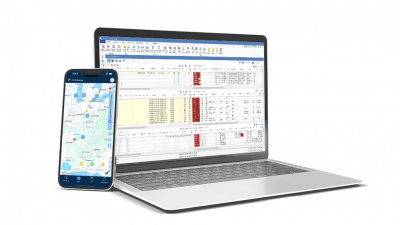Are you looking to streamline your transportation and logistics operations? A Carrier TMS (Transportation Management System) can be a game-changer, but choosing the right one can be daunting. Our Guide to Choosing the Right Carrier TMS offers valuable insights into the key factors to consider when deciding.
What is an RFP?
An RFP (Request for Proposal) is essentially a shopping list for businesses. It’s a formal document you send out to ask companies to pitch their products or services to you. Think of it like putting out a “help wanted” ad, but for businesses.
Crafting a Compelling RFP
Once you’ve downloaded our buyers guide, you’re ready to create a compelling RFP. A well-crafted RFP (Request for Proposal) is essential to attract the best vendors and ensure that your specific needs are met. Let’s delve deeper into each section of a successful RFP.
Understanding Your Needs
Before you begin drafting your RFP, it’s crucial to have a clear understanding of your company’s unique requirements.
- Identify Pain Points: What are the current challenges you face with your existing TMS? Are there areas where efficiency could be improved?
- Define Key Features: Determine the essential functionalities that your new TMS must possess to support your operations. Consider factors such as load planning, billing and invoicing, dispatch management, tracking, and reporting.
- Consider Future Growth: Anticipate your company’s future growth and ensure that the TMS you select can scale to accommodate your expanding needs.
- Set a Budget: Establish a realistic budget for the TMS investment to guide your evaluation process.
Key Sections to Include in Your RFP
A well-structured RFP should include the following key sections:
1. Introduction
- Provide a brief overview of your company, its size, and the scope of your transportation operations.
- Clearly state the purpose of the RFP and the desired outcomes.
- Highlight any specific challenges or opportunities that the TMS should address.
2. Scope of Work
- Define the specific requirements for the TMS in detail. Include information on:
- Functionality: Specify the features and capabilities that are essential for your operations, such as invoicing, accounting, load optimization, dispatch management, tracking, and reporting.
- Integration: Outline the systems and applications that the TMS must integrate with, such as EDI, load boards, telematics, and ELD systems.
- Scalability: Indicate your future growth plans and how the TMS should accommodate them.
- Data Management: Specify your data security and compliance requirements, including data privacy regulations.
3. Evaluation Criteria
- Outline the factors that will be used to evaluate vendor proposals. Consider the following criteria:
- Functionality: Assess how well the vendor’s TMS aligns with your specific requirements and integrates with your existing technology (e.g., ELD, Load Boards, telematics systems).
- Pricing: Evaluate the pricing structure, including licensing fees, implementation costs, and ongoing maintenance expenses.
- Implementation: Consider the vendor’s experience in implementing TMS solutions and their estimated timeline.
- Customer Support: Assess the quality of the vendor’s customer support services, including training, technical assistance, and responsiveness.
- Vendor Reputation: Research the vendor’s reputation and track record in the industry.
- Compatibility with Current Partners: Evaluate the vendor’s ability to integrate with your existing technology partners (e.g., logistics providers, freight brokers).
- Integration Capabilities: Assess the vendor’s ability to integrate with your current TMS or other transportation-related systems.
4. Proposal Requirements
- Specify the format and content of the vendor proposals. Request the following information:
- Company Overview: Provide a brief overview of the vendor’s company, experience, and size.
- Product/Service Details: Describe the TMS solution in detail, including its features, benefits, and pricing.
- Customer References: Request a list of references from satisfied customers.
- Implementation Methodology: Outline the vendor’s implementation process, including timelines, resources, and support.
- Pricing and Contract Terms: Specify the pricing structure, contract terms, and any additional fees.
5. Timeline and Next Steps
- Clearly communicate the RFP submission deadline and the anticipated timeline for the evaluation and selection process.
- Outline the next steps, such as vendor presentations or site visits.
Tips for Writing a Successful RFP
- Be Specific and Detailed: Clearly articulate your requirements to avoid misunderstandings.
- Involve Key Stakeholders: Ensure that key stakeholders are involved in the RFP process to ensure that their needs are addressed.
- Use a Template: Consider using a template to help you structure your RFP and avoid omissions.
- Proofread Carefully: Thoroughly proofread your RFP to ensure that there are no errors or inconsistencies.
By following these guidelines, you can create a compelling RFP that attracts the best Carrier TMS vendors and helps you make an informed decision for your business. To see PCS TMS in action and learn how it can transform your operations, request a personalized demo today or sign up for a quick “Chat with Chase” session.



